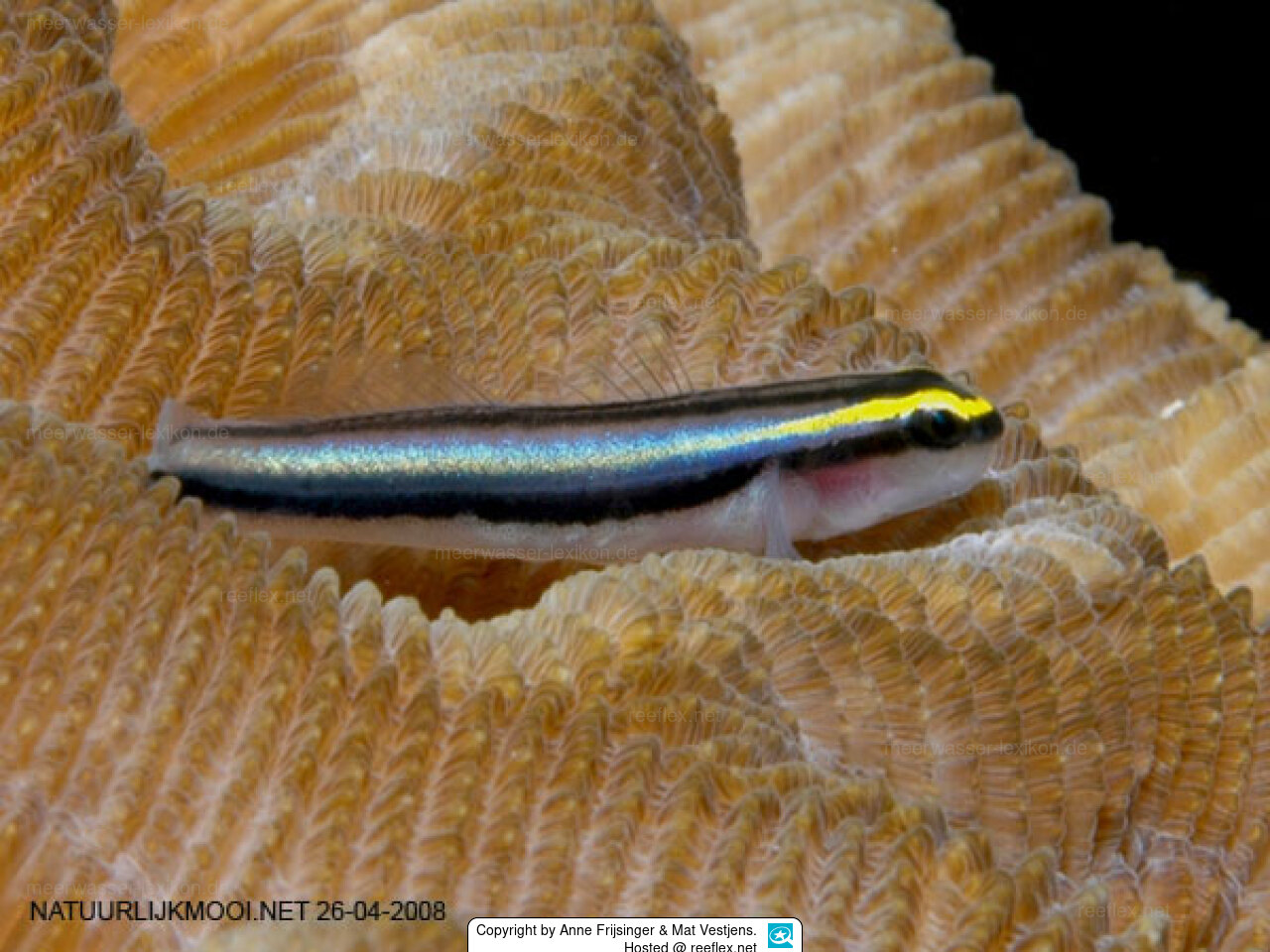Info
Elacatinus evelynae (Böhlke & Robins, 1968)
Elacatinus evelynae, the sharknose goby, Caribbean cleaner goby, Caribbean cleaning goby, is a species of goby native to the Western Atlantic Ocean from the Bahamas and the Lesser Antilles to the northern coast of South America, as well as the Antilles and western Caribbea.
Synonymised names:
Gobiosoma evelynae Böhlke & Robins, 1968 · unaccepted
Jumping guard
A jumping guard prevents (nocturnal) fish from jumping out.
Wrasses, blennies, hawkfishs and gobies jump out of an unprotected tank in fright if their night rest is disturbed, unfortunately these jumpers are found dried up in the morning on carpets, glass edges or later behind the tank.
https://www.korallenriff.de/en/article/1925_5_Jump_Protection_Solutions_for_Fish_in_the_Aquarium__5_Net_Covers.html
A small night light also helps, as it provides the fish with a means of orientation in the dark!
am 11.11.22#4
Ich halte eine Einzelne, frisst wunderbar und putzt tatsächlich auch größere Fische sehr gut. Sie leben an sog. Putzerstationen vorzugsweise bei Hirnkorallen in der Natur.
am 10.07.10#3
Hatte ein wunderschönes Pärchen dieser Tiere, das auch öfters abgelaicht hat. Einfach von der Haltung, es ist allerdings nicht selbstverständlich, dass sich zwei Tiere vertragen, sie können sich auch durchs ganze Aquarium (bei mir damals 250 Liter) jagen und zu Tode stressen, habe ich leider auch schon erlebt. Diese Tiere sind inzwischen oft auch als Nachzucht von den USA zu bekommen, würde nach Möglichkeit auf jeden Fall nach solchen Nachzuchten Ausschau halten! Dann ist die Futteraufnahme auch kein kritischer Punkt mehr. War bei meinem Pärchen jedenfalls wunderschön, wie sie den ganzen Tag direkt "aufeinander" lagen und nicht von der Seite des jeweils anderen Tieres weichen wollten. Gelaicht wird in Höhlen, bei mir im Gestein, einmal auch in einer Tonröhre am Boden.
am 07.11.06#2
Laßt euch von keinen Händler erzählen Raubfische würden Putzerfische erkennen und in Ruhe lassen . Meine Calloplesiops altivelis hatten diese Grundeln zum Fressen gern !!!







 Anne Frijsinger & Mat Vestjens, Holland
Anne Frijsinger & Mat Vestjens, Holland

































